Katori Shrine (Katori Jingu), located about an hour by train from Chiba Prefecture's Narita Airport, is the head shrine of the more that 400 Katori Shrines throughout the country, and is one of the few shrines that has been granted the special title "Jingu" in its name, since before the Meiji Era. It is believed to be home to the god of family safety, business guidance, marriage, and easy childbirth.
目次
About Katori Shrine (Katori Jingu)
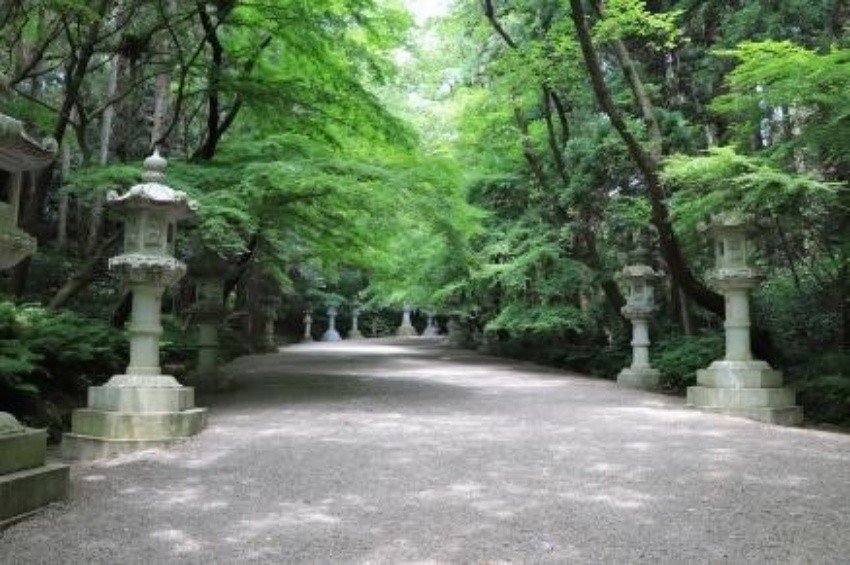

The Katori shrine is said to have been first built in the era of the first emperor, in about 600 BC. The shrine is home to the god, Futsunushi no Okami, who appears in the Japanese mythology about the passage of the land from the gods to human Emperors. It has a long and deep relationship with the Kashima Shrine (Kashima Jingu) in Kashima City of Ibaraki Prefecture, and the two are often referred to together as "Katori and Kashima". There are many treasured cultural properties there, and about 200 of Chiba Prefecture's designated cultural properties.
Among those is the 29.6cm in diameter by 2cm in thickness, 4560g in weight, white bronze mirror, the "Kaiju Budokyo", the Sea Beast Glazed Mirror, one of the "three best mirrors in Japan". Decorated with grapes and an arabesque design, it features lions, horses, deer, giraffes, and other animals, as well as birds such as peacocks, ducks, phoenixes, and chickens, as well as various insects.
Over 700 cherry trees, of 15 different varieties, such as the Yoshino cherry, the Oshima cherry and others have been planted along the Omotesando roadside, the old path to the shrine, as well as on the north side of the shrine grounds, called the Sakura Baba. When spring comes, the shrine is lively with visitors who come to see the cherry blossoms. The best time to see the flowers is from late March to early April. The grounds are spacious, and we recommend walking along the gravel path of the the Kitasando, lined with thick bushes, maple and cherry trees.
Things to See at Katori Shrine (Katori Jingu)
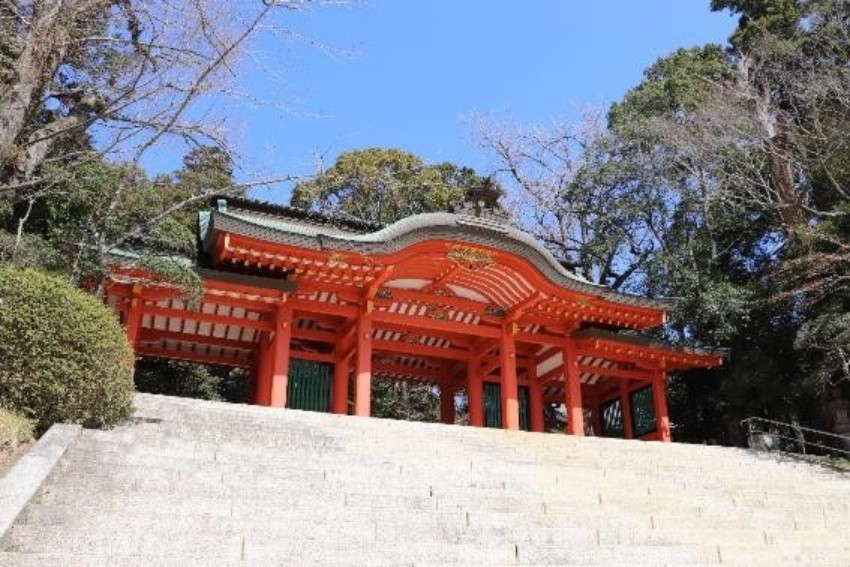
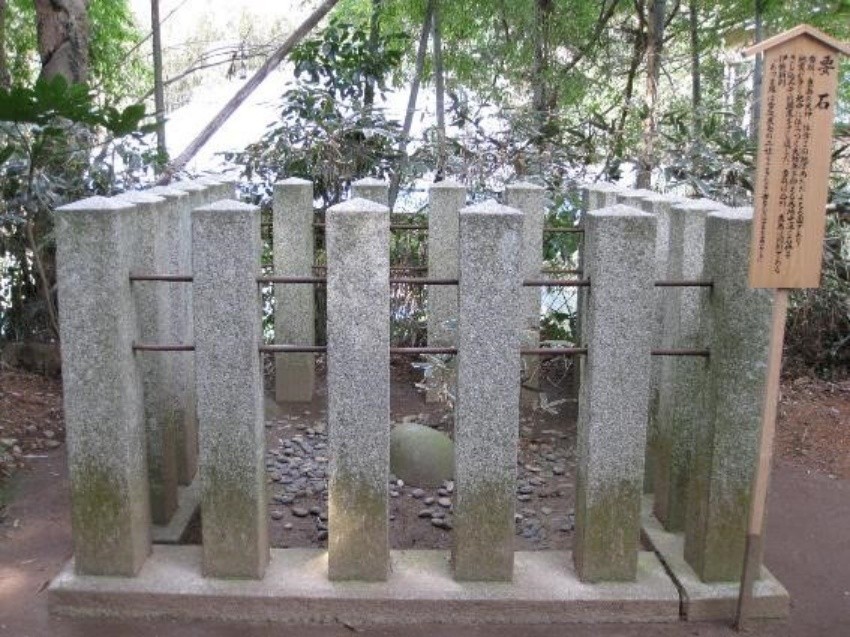
The first thing to see is the main hall which was built in 1700 by Tokugawa Tsunayoshi, it is one of the largest 2-storied shrines. The cypress-bark roof is lacquered black, and is highly-colored. The next point is the tower gate. Built at the same time as the main hall, the glazed gate has a copper shingle roof. The gate is painted in the ancient traditional "Junwa" shrine architectural style, has well-balanced upper and lower floors, and serves as the main symbol of Katori Shrine. The gate and main hall have both been designated as important cultural assets.
You should also make sure to see the Kanameishi "key stone", which is just behind the Gokoku Shrine on the way to the Oku-Miya area. The stone is surrounded with stone pillars, and is said to penetrate deep within the earth to hold down the giant catfish that causes earthquakes. Katori Shrine has a convex shape, and Kashima Shrine has a concave shape. When Tokugawa Kosuke, who ruled over the Mito area in the Edo Period, visited Katori Shrine, he tried to dig around the key stone, and it is said that he couldn't find the bottom of it.
Access to Katori Shrine (Katori Jingu)
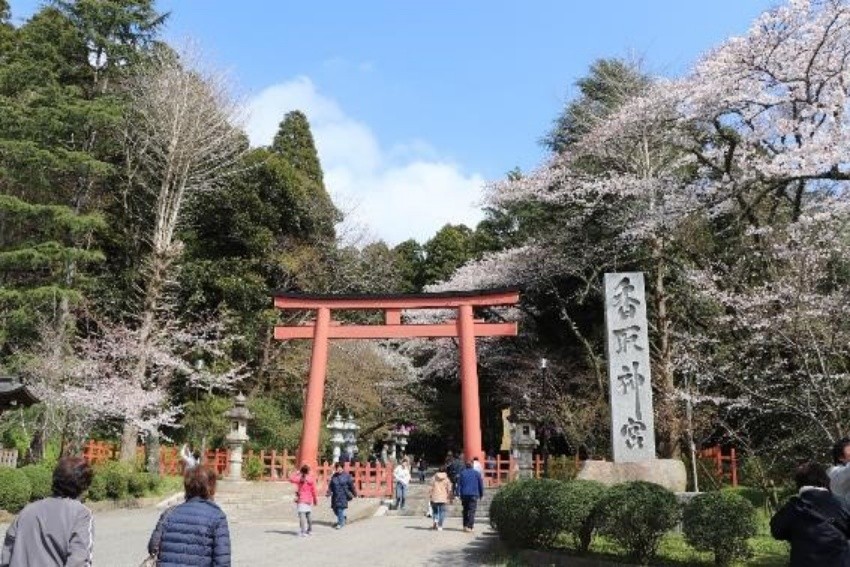
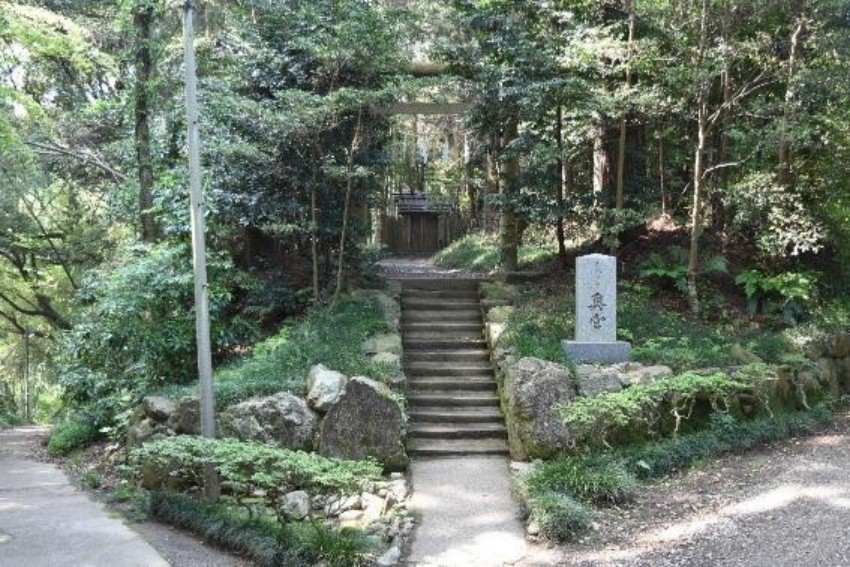
From JR Sahara Station, go to the Bus Stop Number 2 and get on the 'Community Bus Oto-Mizuho Route' (コミュニティバス大戸・瑞穂ルート) on weekdays, and the 'Shuyu Route' (周遊ルート) on weekends and holidays. Ride for about 15 minutes, then get off at the 'Katori Jingu Dai-1 Chushajo-waki' (香取神宮第1駐車場脇) stop, and it's just a short walk. Otherwise, from JR Sahara Station #1 bus stop, take the 'Rosen Bus Chiba Kotsu-Jinri-sen' bus (路線バス千葉交通神里線) for about 15 minutes, and get off at the 'Katori Jingu Ken-michi-zoi' stop (香取神宮県道沿い). In either case, the busses don't run during Japanese New Years Holidays.
From Narita Airport, take the Keisei Main Line for about 10 minutes, get off at Keisei Narita Station, and walk about 10 minutes to JR Narita Station. Then, take the JR Narita Line for about 40 minutes to JR Sahara Station. (JR佐原駅)
Spot Information
- Spot name:Katori Shrine (香取神宮)
- Street Adress:1697-1 Katori, Katori-shi, Chiba 〒287-0017
- Access: Mentioned as above
- Ticket:Free for entrance
- Opening hours: 08:30~17:00
- Holiday:Open year around
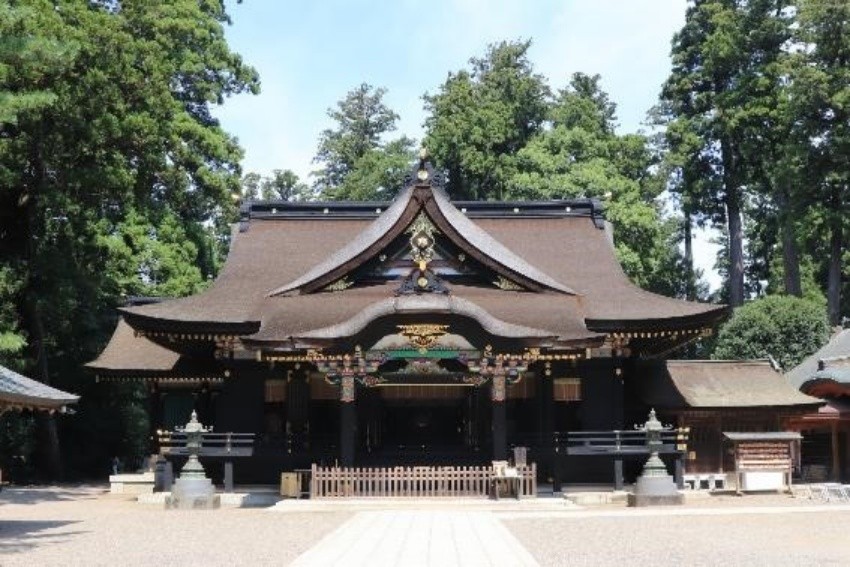


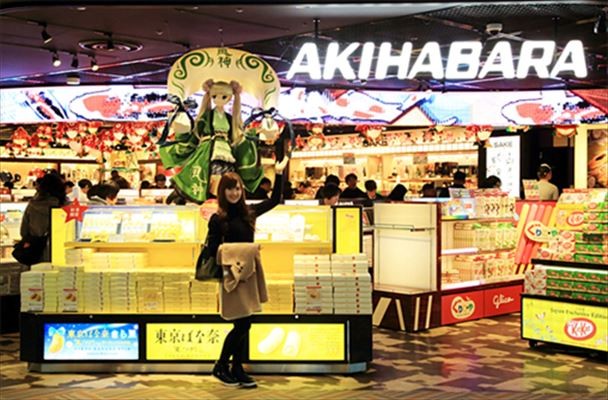
Comments